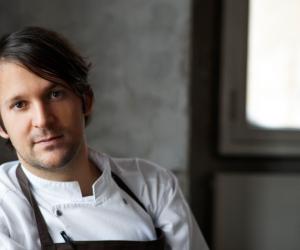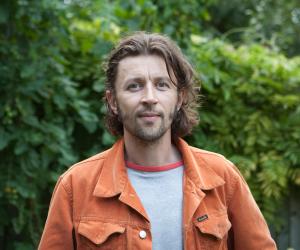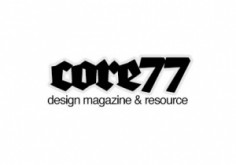
The annual Design Indaba conference brings the most innovative design practitioners from around the world to Cape Town, South Africa. This year was the magazine's 15th conference and along with three days of speaker presentations, there is also an accompanying Expo showcasing South Africa's brightest design talent, now through March 4th.
All designers recognize collaboration as fundamental to the process of design. Whether it's collaborating across disciplines or within a single studio, the profession is strengthened by this unique tenet. On Design Indaba's opening day, the design philosophies of two speakers presented a challenge beyond their particular fields of food and landscape. What possibilities open when designers consider time and place as collaborators in their work? René Redzepi, an owner and chef of Copenhagen's Noma restaurant, leverages both to design a daily meditation on the plate. Dan Pearson, London-based landscape architect, delights in the unexpected dimensions of collaborating with time and place.
A Single Moment on the Plate
The best chef in the world is René Redzepi. The owner and creative force behind Copenhagen's Noma restaurant, Redzepi is credited with creating "New Nordic" cuisine emphasizing seasonal, local and foraged ingredients.
 Courtesy of Phaidon
Courtesy of Phaidon
Known for his unexpected ingredients and flavor profiles, the chef opened his presentation with an element of surprise, a visual gag. Porters wheeled out a dead duck strung up on a rolling rack—fully feathered with a visible blood stain still red from the kill. The duck was a great metaphor for Redzepi's approach to food and designing elements on the plate: fresh, local unexpected and memorable.
When the restaurant opened in 2004, Redzepi faced an unconvinced audience. "No one believed that a restaurant serving Nordic cuisine could project into the future," Redzepi recalls. Although it took a moment to find its culinary footing, once it did, Noma turned the expectations for fine dining in Copenhagen on its head. The restaurant itself is minimal, its interiors dealing in the same pared down elegance as the food itself. Without the white tablecloth treatment, the food is clearly the star.
"We decided that our biggest job is to distill a single moment in time—a pure and clear time of place." The experience of dining at Noma answers, "Where are we? What time of the year are we in?" For Redzepi, he identified his challenge to capture a memory on the plate. The chef's attitude towards his ingredients drills down to the most granular philosophy where each day the ingredients taste different—how much water fall did this vegetable receive? Did a brisk day during the growing season create a sweeter green?
Through foraged ingredients and relationships with local farmers, Redzepi worked towards the challenge. Below, he answers the question posed by the dead duck, "What happens when you shoot a duck and where does it land?" How does this shape the way a Noma duck is prepared a served?
Today, the spotlight continues to shine on Noma but the vision of its chef has become more expansive. Adding to the restaurant's acclaim, Redzepi has created NordicFoodLab.org, a knowledge bank of gastronomy for chefs in the region. Redzepi hopes the site will, "keep feeding pillars of this cuisine so everyone, in the end, can eat better food." Additionally, his annual MadFood conference, (mad is food in Danish) is an ongoing exchange of ideas and ingredients with chefs from around the world.

As Ferran Adria, Redzepi's former employer at elBulli, argued at a previous Design Indaba, chef's create a language with their food. Redzepi takes it one step further by asking, "Why be happy with ABC when you can expand the alphabet?" Redzepi's hyperlocal, hyperseasonal, foraged ingredients form new letters to create his own vocabulary for cooking.
Finding delight in the unexpected, Japan asks you to look again.
Landscape architect Dan Pearson delights in the joys of the unexpected. His design toolbox consists of more than pen, paper and raw materials. Wind, water, sun, seasons, animals and most importantly, time, are the unnamed design collaborators for landscape architects.

Using his work on the Millennium Forest in Hokkaido, Pearson guided the audience through the numerous considerations of creating a sustainable forest designed to survive for 1000 years. From the beginning, the challenge was not the planting or planning of the forest itself, but how to create an inspirational and educational environment that sparked a commitment to stewardship from its visitors.
Small looking-boxes dot the trails and serve as "museum pieces of what's happening in the space." Filled with seasonal fauna, insects and timber, they are a changing installation that focus on particular stories of the forest.

As a living design, the forest itself is a constantly shifting canvas. The natural elements lend a hand to create, what Pearson calls, "a series of happenings," year round. A beautiful example of this occurred when planting a 3-hectare garden to emulate the forest floor. Using a mix of familiar Japanese garden plants and native forest plants, the team planted 35,000 perennials to create an "ubermeadow." Within a few seasons, the massive blooms of the garden in spring attracted whole colonies of butterflies that would disperse and resettle when approached by visitors. This added another visual and aural layer to the interaction between urban city dwellers and nature.
The addition of an Earth Garden at the site offered another opportunity to celebrating the unexpected outcomes of collaborating with time and place. As visitors approach the edge of the forest, there was originally a patch of cleared land that led to a soba restaurant. The abrupt change in scenery was muted by creating a series of landforms that echo the undulating foothills of the horizon line. Unexpectedly, this sea of landforms acoustically and visually connected the distant mountains with visitors. The convex forms served as a bowl, amplifying the sound and the wind. Visually, Pearson compared the effect to looking into the bottom of a bottle.

Pearson began his presentation with examples of the visual delight of exploring Japan—a whole season captured in the ingredients and presentation of a bento box, a mud wall as a textured landscape, a bonsai garden that's taken over a corner house. Pearson's work not only deals with shaping forms and environment, but embraces the constant collaboration with time. His design process incorporates the unexpected and encounters with these environments asks viewers to look again.















